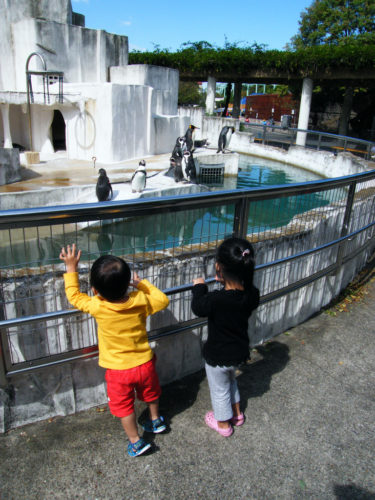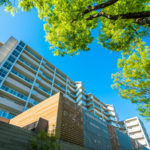Higashiyama Zoo – What to See, Admission Fees, and How to Get There
2019.03.06
- Tags:
-

<description>
Nagoya’s Higashiyama Zoo is home to Japan’s most handsome gorilla. Here we’ll tell you all about the zoo, its history, and its most popular attractions. We’ve also listed some of its accompanying facilities that you might want to check out, so keep reading if you’re planning a visit to the area!
</description>
Japan’s largest metropolitan areas are the Kanto area, surrounding Tokyo, and the Kansai region, centered around Osaka. Right up there with the giants is the Chukyo area, in the center of which lies Nagoya. This bustling city boasts its own unique customs and food culture, as well as the renowned Golden Shachihoko atop Nagoya Castle, and even the world’s largest planetarium.
But one particular spot stands out. Since 2010, Higashiyama Zoo has been the second most visited zoo in the country. Visitors from around the world drop by to see the zoo’s famed “handsome gorilla.”
Here we’ll tell you what’s so unique about the zoo, what to do there, and how to get there.
Contents
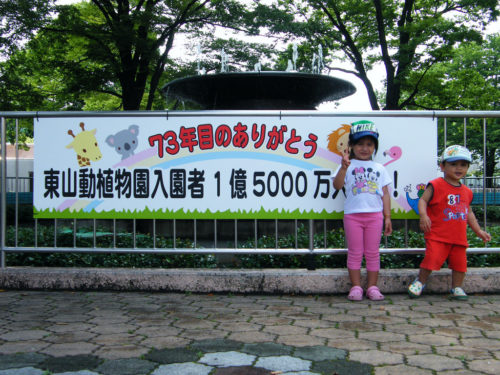
Higashiyama Zoo - History and What Makes It So Unique
Higashiyama Zoo has a long history. It was first opened to the public as the Namikoshi Educational Zoo in 1890. After management was handed over to the city of Nagoya, it was renamed Higashiyama Zoo in 1937 and has been loved by both locals and visitors ever since.
Following the Second World War, the two elephants at Higashiyama were the only elephants still alive in the country. In 1949, the “Elephant Train” carried countless school children rushing to the zoo to seem them up close. The zoo saw a drop of visitors in the early 2000s, but when Shabani the “handsome gorilla” came under the spotlight in 2015, Higashiyama Zoo shot up the rankings to become the second most visited zoo in Japan (as of December 2018).
Behind the zoo’s recovery story are the efforts of the staff and personnel to “connect people with nature.” This theme is very much still present at Higashiyama Zoo today.
One such effort was the “animals first” movement. In the fall of 2018, zookeepers devoted themselves to creating a comfortable home for their chimpanzees. The design of the new hut was based on research of wild chimpanzees in Africa and the environment they live in. Much work was put into improving the animals’ comfort levels and reducing stress. Their personal space has been increased, and homes have been renovated to more closely resemble their natural habitat.
The zoo has also been putting effort into public relations and spreading knowledge about their animals. Their social media accounts are filled with cute animal posts as well as informative ones about their habits. People follow these accounts especially to enjoy rare footage that only a zookeeper would usually be able to see.
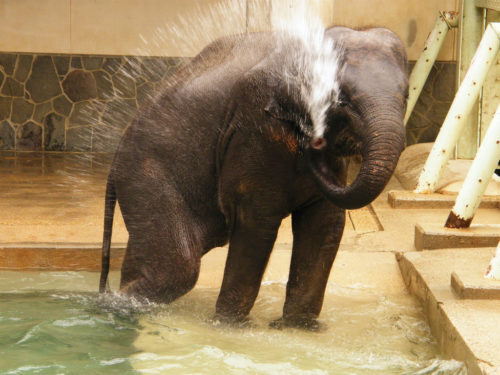
What Not to Miss at Higashiyama Zoo
Now let’s look at some of the best attractions Higashiyama Zoo has to offer.
The many exciting exhibitions showing the animals’ behavior provide an environment for children to discover their natural surroundings and learn about the protection of wild animals. The genuine experience comes from the animals themselves.
Learn About the Animals at the Encounter Plaza / Feeding Shows
Seeing animals up close and being able to communicate with them is the charm of visiting a zoo. Higashiyama Zoo is especially unique for the many small touches that allow visitors to really see with their own eyes how the animals behave. Events are plentiful and very popular among families.
〇Feeding Experiences
On Sundays (first to fourth of the month) from 2:00 PM, visitors are invited to experience feeding the animals themselves. Participation is free but limited to 50 people on a first come first served basis.
You’ll come face to face with large animals like giraffes, elephants, kangaroos, sea lions, hippos, and the American bison.
Imagine looking a giraffe in the eye from the top of an observation deck, because that’s where you’ll be feeding your new long-necked friend.
・Animals You Can Feed
First Sunday of the month: Giraffe
Second Sunday of the month: African elephant
Third Sunday of the month: Red kangaroo (June - September) / Sea lion (October - May)
Fourth Sunday of the month: Hippo (April - November) / American bison (December - March)
〇Exciting Feeding Shows
Visitors can watch animals enjoying their meals during the feeding shows.
Even the sleepy koalas get up and move around to get a hold of their lunch, while lions and crocodiles will show off their sharp teeth. The demonstrations are a great opportunity to learn about how and what each species eats.
〇Animal Encounter Plaza (Fureai Hiroba)
You can touch the more gentle animals like sheep and bunnies at the Encounter Plaza (Fureai Hiroba). The spot allows one to enjoy first-hand communication with the animals. We especially recommend stopping by if your children haven’t had much experience interacting with animals before.

Shabani - the World-Renowned Handsome Gorilla
Shabani is a Western lowland gorilla, born in the Netherlands in October of 1996. He came to Japan in 2007.
When a certain photo of him was posted to social media in 2015, his good looks and rippling muscles attracted attention from around the world. Shabani became so popular that his own photo book was published, and has since remained the most sought-after member of Higashiyama Zoo. He received the most votes in the zoo’s 2018 popularity poll, and some social media users insist that he resembles some famous American actors.
Shabani can easily be found in a crowd by the unique silver gray hair on his back. This is a characteristic of fully-grown male gorillas, called silverbacks. One of the reasons people love him is his calm and composed personality, quite opposite from the stereotypical image of a gorilla.
Rare Animals Exclusive to Higashiyama Zoo
Higashiyama Zoo breeds many animals that can’t be found anywhere else in Japan.
The honey badger is the “World’s Most Fearless Animal” according to the Guinness Book of World Records. It’s a mudslide of about 50-80 cm, but will boldly confront enemies like lions or venomous snakes.
The blue-throated macaw is a parrot on the verge of extinction, and it’s said that there are only about 250 of them left in the wild. They are frequently trapped illegally for their vivid blue and orange yellow feathers.
A rice fish found in Indonesia by a Higashiyama Zoo keeper in 2008 turned out to be a new species. Higashiyama has the only aquarium in the world where you can see this new ricefish.
Some of the rare animals found at Higashiyama Zoo were brought to Japan illegally, but were unable to return to their home country. Higashiyama Zoo takes care of such animals and works to spread knowledge about wildlife smuggling, poaching, and the Washington Convention in order to end illegal wildlife trade.

Admission Fees and How to Get There
Higashiyama Zoo can easily be reached by public transport. Below is all the information you might need to actually get there, including entrance fees and some tips to help you when you arrive.
Admission Fees
The opening hours at Higashiyama Zoo are from Tuesday to Sunday, 9:00 AM to 4:45 PM. Some animals start returning to their homes at around 4:00 PM so we recommend arriving in the earlier hours. The entrance fee is very affordable for the time you can spend there.
〇Admission Fees
|
Category |
Adult (High School and Above) |
Nagoya City Senior Citizen (65 and Above) |
|
Admission |
500 yen |
100 yen |
|
Group (30 or more) |
450 yen |
90 yen |
|
Group (100 or more) |
400 yen |
80 yen |
|
Annual Pass |
2,000 yen |
600 yen |
|
Garden and Sky Tower Ticket |
640 yen |
160 yen |
There‘s a limited supply of goat and sheep food at the Animal Encounter Plaza available for purchase for 100 yen. Feeding experiences are free but you must receive a numbered ticket in front of the event announcement billboard of the animal you wish to feed. Tickets are given out from 10:00 AM on a first come first served basis.
How to Get There
If you plan on using the Nagoya Municipal Subway, it’s a direct 17-minute ride from Nagoya Station on the Higashiyama Line to Higashiyama Koen, the stop nearest the zoo. If you’re driving, the zoo is about 10-15 minutes from the closest highway exits.
|
Visiting by Subway: Nagoya - Higashiyama Koen - Higashiyama Zoo |
|
Upon arrival at Nagoya Station, navigate your way to the Higashiyama Line subway platform. There’s another subway line (Sakura-dori Line) also running through the same station so double check that you’re at the right one. You’ll want to get on a train from the platform in the direction of Fujigaoka Station and get off at the ninth station: Higashiyama Koen. The fare is 270 yen for adults and 130 yen for children. Leave the station’s Exit 3 and turn right to find the zoo. From Nagoya Station to Higashiyama Koen Station is 18 minutes, Higashiyama Koen Station to Higashiyama Zoo is 3 minutes on foot. |
|
Visiting by Car |
|
If you’re using the Tomei Expressway, exit at Nagoya and drive west along prefectural road 60. Turn left at the Hoshigaoka intersection and follow the road. It’s about a 15-minute drive from the Nagoya exit.
If you’re using the Nagoya-Daini-Kanjo Expressway, you’ll need to transfer to the Nagoya Daini-Kanjo Expressway (Mei-Nikan) at Nagoya Nishi JCT. If you decide to go north, exit at Kamiyashiro. If you decide to go south, exit at Kamiyashiro-minami. Go west along prefectural road 60 for about 10 minutes and arrive at Higashiyama Zoo.
When using the Nagoya Expressway, exit at Yotsuya and head east along prefectural road 30. Turn east at road 60 and drive for about 10 minutes to reach Higashiyama Zoo. If you get lost, look for the 134-meter tall Higashiyama Sky Tower. |
There are five parking lots. The closest to the zoo is the Dobutsuen Nishi Parking Lot. Your next choice would be the Kamiike Parking Lot or the Midoribashi Parking Lot.
〇Parking
|
Capacity |
1,600 |
|
Hours |
8:45 AM - 5:00 PM |
|
Rates |
Standard Passenger Car: 800 yen Large Size Vehicle: 2,000 yen Motorcycles: 400 yen |
Facilities at Higashiyama Zoo and Botanical Gardens
You could easily spend a whole day at Higashiyama Zoo as it offers various fun facilities for everyone to enjoy. Nocturnal animals and reptiles await visitors at the Natural Animal House, as do various ricefish species at the World Ricefish House. They also have a food court and restaurants that you can stop by for lunch.
The zoo is officially called Higashiyama Zoo and Botanical Gardens. True to its name, there’s a botanical garden adjacent to the zoo. Higashiyama Botanical Gardens’ wild birds were chosen as one of the 100 Soundscapes of Japan, and you can hear them sing as you stroll around the grounds. You can also enjoy the beautiful seasonal flowers like the plum and cherry blossoms. Visitors will even find some traditional Japanese architecture called Gassho-Zukuri, which has been relocated from Shirakawa-go, Gifu.
The World Ricefish House has replicated the fields that the Japanese ricefish inhabited. About 3,000 fish of 200 species from around the world can be found here, including many from the nearby Shonai River and mudflats. There aren’t many aquariums elsewhere that have a whole exhibition just for ricefish.
There’s also the Higashiyama Sky Tower, an amusement park, various food options, cafes, and souvenir shops. Don’t worry about getting bored any time soon.
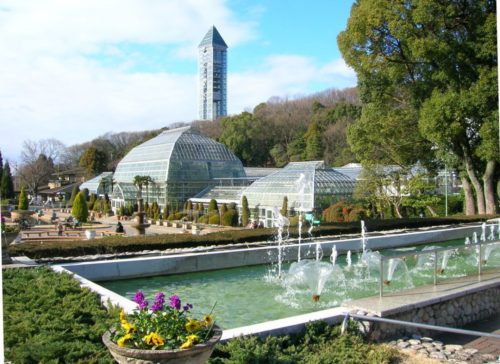
In Conclusion
Higashiyama Zoo boasts esteemed and unique animals, various popular events, and special experiences like feeding your favorite animal. It continues to provide a learning environment for visitors to gain an understanding of animals and ecology.
The accompanying facilities are amazing too. You can discover the natural surroundings of Japan as well as the country’s culture at exciting facilities like the Botanical Gardens and the World Ricefish House.
On top of everything it’s super accessible, so make sure to consider adding the Higashiyama Zoo to your itinerary!
Share this apartment details

